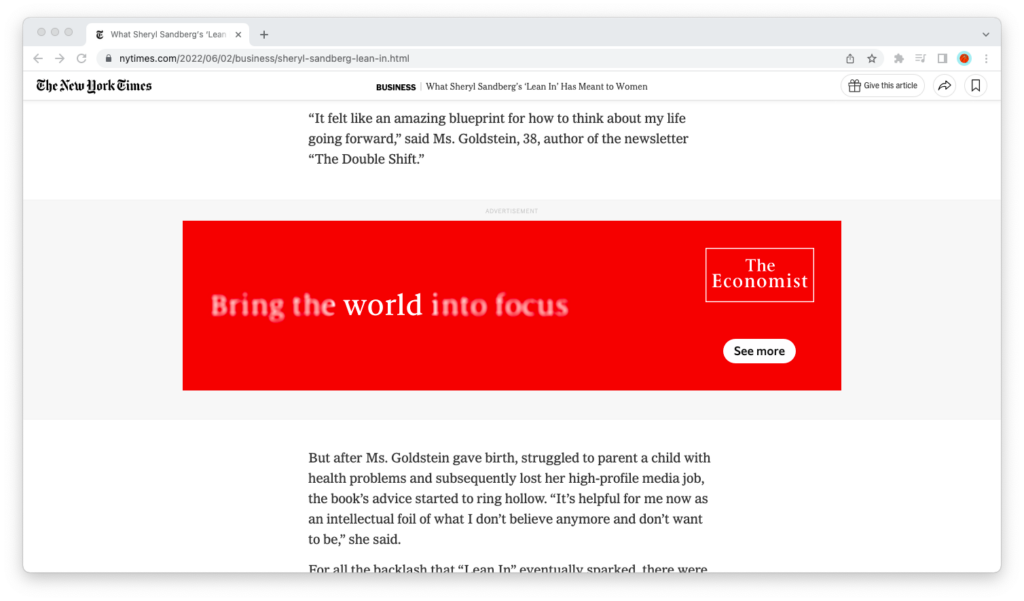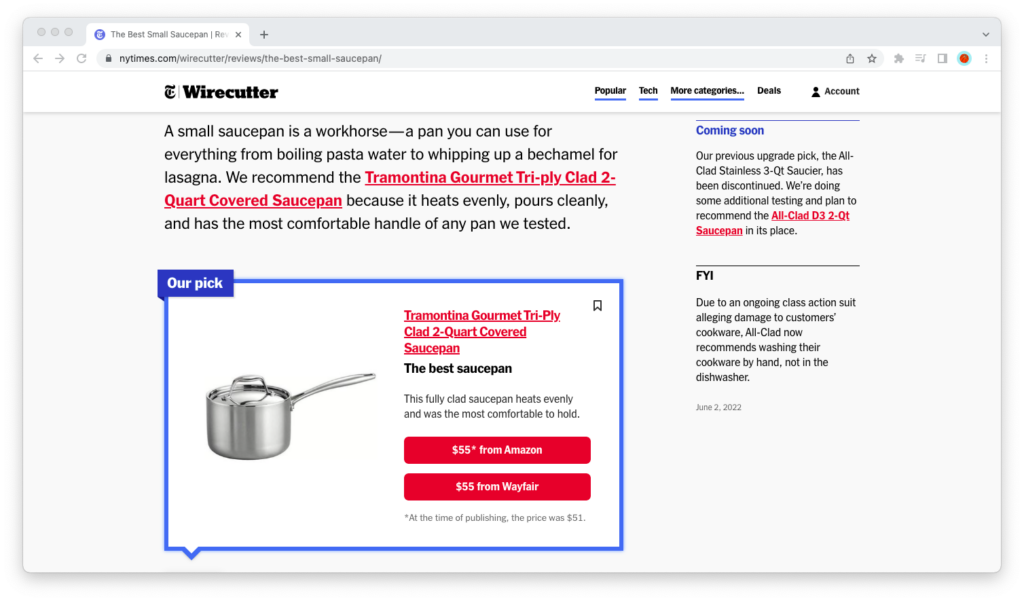
This post is sponsored and written by Dim Nikov, a web publisher. Check out Dim’s blog posts and case studies at AskDim.com.
If you own a high-traffic website—be it a blog, a niche site, a news outlet, or an online tool—and you’re looking to monetize it, display ads and affiliate marketing are the two most popular ways to get that done.
Display Ads

Every day, billions of people log on to the Internet to get their work done, find answers to their questions, and catch up on world news, celebrity gossip, and their favorite entertainment.
From their email inbox to the news sites they read to the influencers they listen to on podcasts and watch on YouTube, most of the websites they use and content they access, they use and access for free. To keep it that way, platforms and publishers show them display ads.
“Display ads” is a generic term for the text, image, video, and interactive ads that Internet users see on websites, mobile apps, and social networks as they browse the web.
For us publishers, “display ads” refers to the advertising space we sell to advertisers—usually through ad networks like Ezoic, who do the selling for us—to monetize the traffic we get on our websites.
Display ads are a fantastic way to monetize your website because they allow you to monetize informational content, which is much less competitive than commercial content, and your revenue grows more or less proportionally to your traffic.
Two metrics are mission-critical when it comes to monetizing your website with display ads: the number of page views your website gets and the average Revenue per Mille (RPM) it earns from selling ads.
Some time ago, the good folks at Income School conducted a survey among their audience to find out how much money bloggers and indie publishers make on average with 1,000 page views.
Their findings?
$29.08.
To put it simply, if you earn an average of $29.08 from display ads and your website has 10,000 monthly page views, you will generate revenue of $290.80/month.
If your website has 100,000 monthly page views, that means you’ll earn $2,908/month, passively, just because you’ve published informational content, it gets organic traffic via search and/or social, and you’ve placed ad placeholders that allow advertisers to outbid each other to show ads to your readers.
Of course, these earnings fluctuate—and how much you can earn comes down to your niche, your website, and the content you publish on it.
In some niches, such as barbecue (check out my case study), advertisers spend the most in the fourth quarter of the year. In others, such as the travel niche, the strongest months (and the highest earnings) are in the summer season.
Related: How Much Can You Earn With Ezoic?
Affiliate Marketing

Think about the last time you grew an interest in a new hobby or sport that required you to buy equipment, and yet you had no idea what to buy. You probably opened your laptop, fired up your browser, and Googled “the best {product} for {activity}.”
You probably also landed on an affiliate website that compared a number of products and recommended the best one in a way that was clear and trustworthy enough to make you click on the “Buy now” button and buy it from Amazon (or whatever other retailer they linked to).
This is affiliate marketing.
But, as a publisher, you’re on the other side of it.
In affiliate marketing, you write about products on your website—or talk about them on your YouTube channel—and provide links for your audience to buy them.
A subset of those who read or watch your content click on the links, and a subset of them buy. You get a commission for each sale you drive. That commission can be as little as a few percent on Amazon, and as much as a quarter or more of that person’s lifetime spend for a Software-as-a-Service (SaaS) app.
To earn money with affiliate marketing, website owners usually publish product reviews and product roundups (think Wirecutter-style best-this-for-that articles) that aim to help their readers to make a purchase decision.
The most important metrics for affiliate marketing are the traffic to your “money pages,” your conversion rate, your commission rate, and the conversion window, which is basically the lifetime of the cookie for visitors coming from your site to the brand or merchant’s site.
If you do affiliate marketing right, you can earn a lot of money. Most publishers start out on Amazon, but the high earnings are in the high-paying programs and the direct deals that you can make with brands and retailers.
Display Ads vs. Affiliate Marketing
Monetizing a site primarily with display ads requires a different business model than monetizing one primarily with affiliate marketing.
For display ads, you want to focus on creating lots of informative content—I’m talking hundreds of posts a year here—that targets low-competition keywords in the SERPs, each of which will drive a decent amount of traffic to your site.
How decent?
In my experience, and the experience of my coaching clients, it takes anywhere from 6 to 9 months for a new website’s content to mature and provide visitors. With good keyword research, you can average between 500 and 1,000 monthly page views per post.
In other words, 100 published posts can bring you anywhere from 50,000 to 100,000 page views per month within 1-2 years. If you apply Income School’s average earnings, that’s a revenue of $1,454 to $2,908 per month.
That’s not a bad return on investment, considering you can outsource your content at an average cost of $40 to $80 per article. Compare that to the returns you get from buying bonds or investing in stocks!
For affiliate marketing, you want to focus on publishing product reviews and product roundups (preferrably, with photos of the actual products that you or your freelancers have tested).
Regardless of what niche you’re in, these tend to be highly-competitive keywords you need to create great content for—and build lots of high-quality links if you want to rank on Page 1 of Google (let alone get the featured snippet or position one).
But if you do it right, by choosing the right affiliate programs with high commission rates and optimizing your website for conversions, you can make much more money on average with an affiliate website than with a display ads website.
These days, everyone’s going for the hybrid model.
The conventional wisdom is that even if you have an affiliate website, you should have 60-80% informational content and only 20-40% commercial content if you want to have a topic authority that helps your money pages rank well on Google.
This also means you can monetize your site with both display ads and affiliate links.
Some website owners are concerned whether adding display ads to an affiliate website will distract users and hurt their revenue, but my experience is the opposite.
If users don’t see ads on your website, some of them will question the legitimacy of the website—as they’re used to seeing ads on the most reputable sites on the Internet, from The New York Times to The Washington Post.
Why You Can Trust Me
Hey there and thanks for reading this far!
I’m Dim, an Ezoic Certified Expert and Ezoic Premium Publisher. I’m a web publisher who’s been building, buying, and flipping online media outlets since 2007.
Occasionally, I do public case studies and give coaching. Check out my latest case studies and learn more at AskDim.com (“ask” as in don’t hesitate to send me an email and ask me a question).

